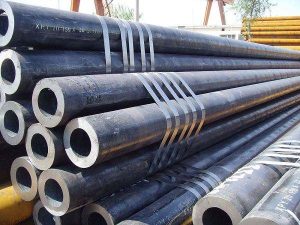With the promotion of new power system construction with new energy as the main body, more and more distributed photovoltaic access to rural power grid. Under the guidance of the national “double carbon” goal, China’s rural distributed photovoltaic power generation will also grow significantly year by year. The large-scale development of distributed photovoltaic power generation in rural areas will definitely bring challenges and far-reaching effects to the traditional rural power grid, and thus reconfigure the rural power grid development model. It is urgent to promote the construction of a new rural grid to meet the “double carbon” goal.
In the future, as the grid will be connected to a large number of distributed photovoltaic and a variety of new energy sources, the rural power distribution system will change from a radial passive network to an active network with a large number of distributed power sources, and the physical characteristics of the grid will change significantly. Therefore, the traditional sense of the rural grid will not be able to adapt to the large-scale intermittent distributed power supply access, the future, rural power grid will also face new challenges.

One is the lack of rural grid capacity. In the local rural grid-based areas, due to the regional load characteristics and photovoltaic, wind power and other power supply characteristics do not match, resulting in the difficulties of consumption, the need for transformation and upgrading or new substation capacity.
Second, the impact of power quality of the grid. As the grid access capacity increases, the voltage deviation will show a “U-shaped” change that decreases and then increases, and in extreme cases even exceeds the upper limit of voltage requirements.
Third, it affects the automation and relay protection action of the distribution network. Traditional rural distribution network generally does not take into account the dual-side or multi-side power supply situation, the configuration of the current protection is mostly non-directional overcurrent protection. After a large number of distributed photovoltaic access, the system failure system and photovoltaic are provided to the fault point short-circuit current, changing the current flowing through the protection, which may lead to relay protection device misoperation, rejection and other acts at the same time, there is a risk of incorrect action of protection such as ready to throw, reclosing, will further expand the scope of grid accidents.
Fourth, the impact of harmonics and hazards. Distributed photovoltaic high proportion of access, due to the inverter and other power electronic components of large-scale access to the grid, coupled with some inverters of poor quality, or will lead to serious harmonic pollution of the grid exceeds the standard. The harm of grid harmonics is multifaceted, will lead to increased grid loss, relay protection false operation, meter measurement inaccuracy and other problems, reducing the reliability of power supply and power quality.
Fifth, the county-level power grid peaking difficulties. The high proportion of intermittent non-peak power sources such as photovoltaic access to county-level rural grids, the grid can be dispatched to the shortage of peaking resources, because the traditional rural grid does not have energy storage equipment, will lead to local areas of photovoltaic power generation peak and peak electricity dislocation, grid peaking difficulties, especially during holidays.
Compared with the traditional rural network, the new rural network should have the access capability to consume a large amount of renewable distributed clean power and ensure the quality of power supply. Therefore, the construction of new agricultural network should be tailored to local conditions, taking into account the stage of rural economic development and distributed photovoltaic characteristics, take different models, not a one-size-fits-all.
First, we should carry out new rural grid planning research, improve the rural distribution network standards, put forward optimization and adjustment program, in the planning lead to achieve distributed photovoltaic orderly construction and access. Comprehensively sort out and improve the relevant system standards for distributed photovoltaic power generation, improve the relevant control processes, and guide the collaborative development of source, network, load and storage. Actively do a good job of PV grid-connected services, PV grid-connected supporting engineering construction, strengthen the upgrading of rural distribution networks to ensure the safe and stable operation of a large number of distributed PV grid-connected.
Second, vigorously cultivate the rural electricity market, local, near the consumption of photovoltaic power generation. To be implemented through rural electrification, electrical energy substitution and other projects to further increase the proportion of electrical energy accounted for rural terminal energy consumption; efforts to promote the electrification of agricultural production and life, and strive to enhance the ability of local consumption of distributed photovoltaic in rural areas; comprehensive expansion of the electrification market in agriculture, and promote the upgrading of agricultural production technology.
Third, we should promote the construction and improvement of policies and regulations to promote the development of new agricultural network (power system). We should assist the government to introduce relevant policies and regulations to guide investors, consumers and grid enterprises to operate in an orderly manner under reasonable prices according to market-oriented rules. Develop the principle that investors need to bear the responsibility of energy storage construction and harmonic elimination, and the supporting energy storage devices and harmonic elimination equipment can be built and managed by the investors themselves, or they can adopt market-based subscriptions, unified construction and shared resources.
The development of distributed photovoltaic has many points of fit with the rural revitalization strategy. The stable income provided by PV can better promote rural development. At the same time, PV has many application scenarios in rural areas, roofs and agricultural sheds can be combined with PV industry, thus changing the rural lifestyle. Through the development of distributed photovoltaic, will significantly improve the level of rural electrification, will also promote the intelligent transformation of rural power grid. In addition, combined with the relatively mature “photovoltaic + agriculture”, the face of the countryside will have a greater improvement. At the same time, the accelerated development of distributed photovoltaic, will also bring greater help to achieve the “double carbon” goal.